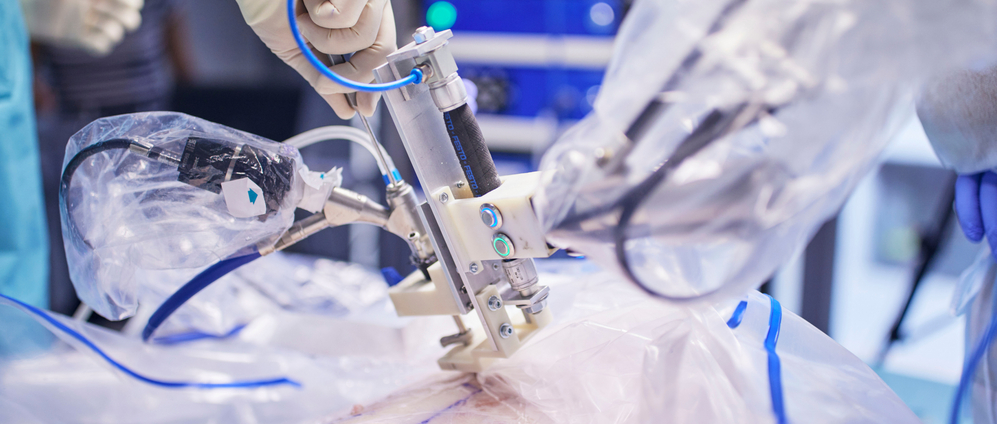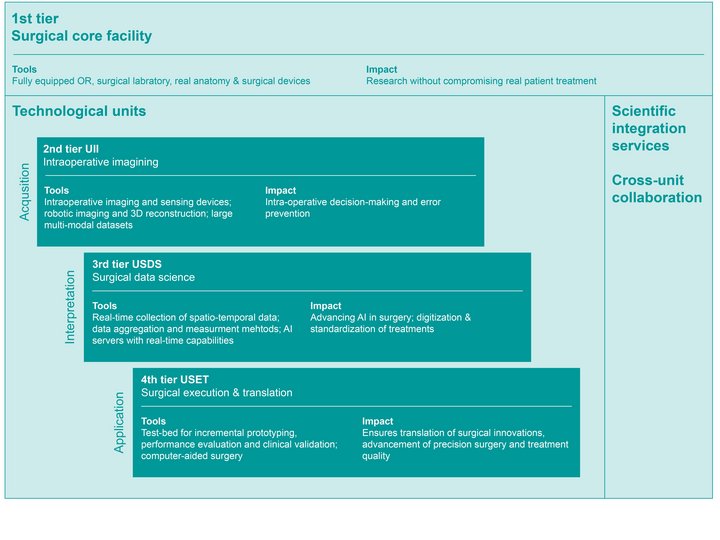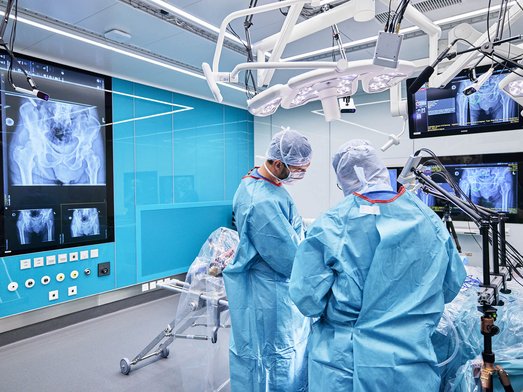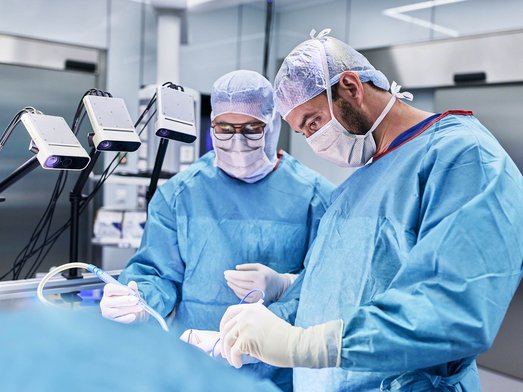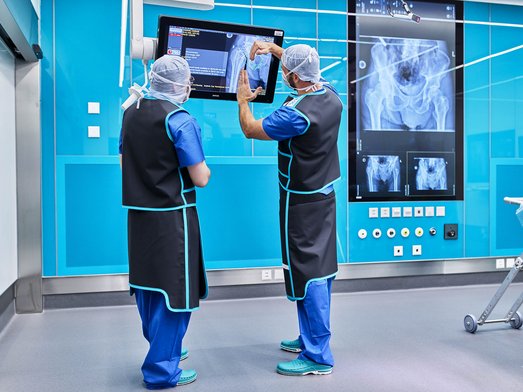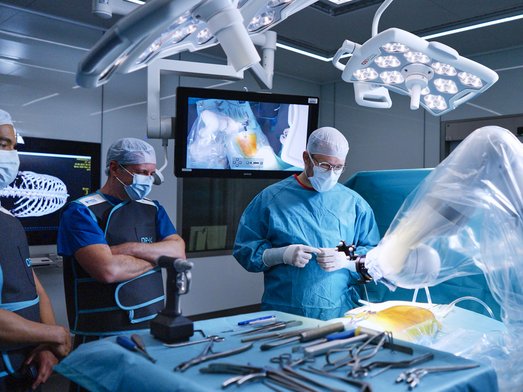Intraoperative Imaging
This unit combines state-of-the-art intraoperative imaging technologies with robotics (robotic ultrasound, robotic computed tomography) and new sensor technologies (depth sensors, hyperspectral imaging, photogrammetry). Researchers can exploit the full potential of intraoperative imaging and develop advanced image-based methods for intraoperative decision making and error prevention.
Surgical Data Science
The Unit for Surgical Data Science connects the OR-X through a high-performance computing network and server infrastructure (Nvidia DGX server infrastructure) for real-time collection and artificial-intelligence processing of surgical data.
Surgical Execution and Translation
The last unit leverages computer-aided surgery equipment (tracking systems, augmented reality, haptic devices and surgical robotics) as a testbed for incremental prototyping, verification and validation to accelerate technology transfer when it comes to surgical innovations.
The Scientific Integration Services unit supports users during their research and development activities, facilitating access to the OR-X as well as enabling the integration of user-specific methods, technologies, and prototypes within and across the specialized units.
